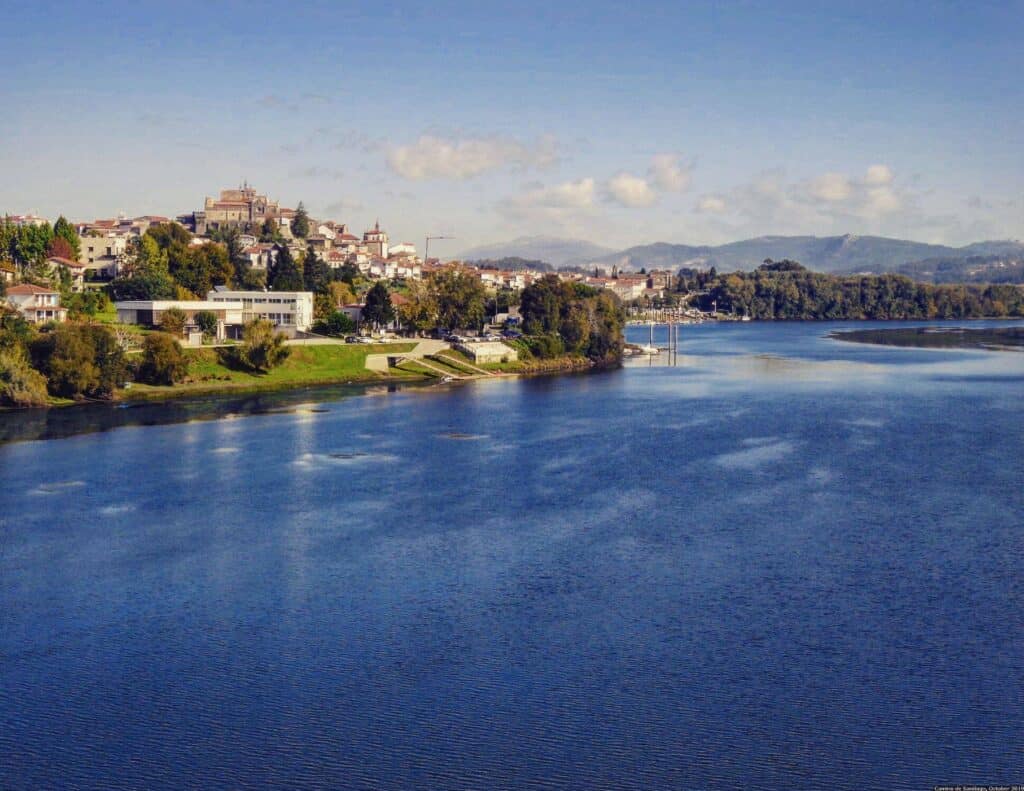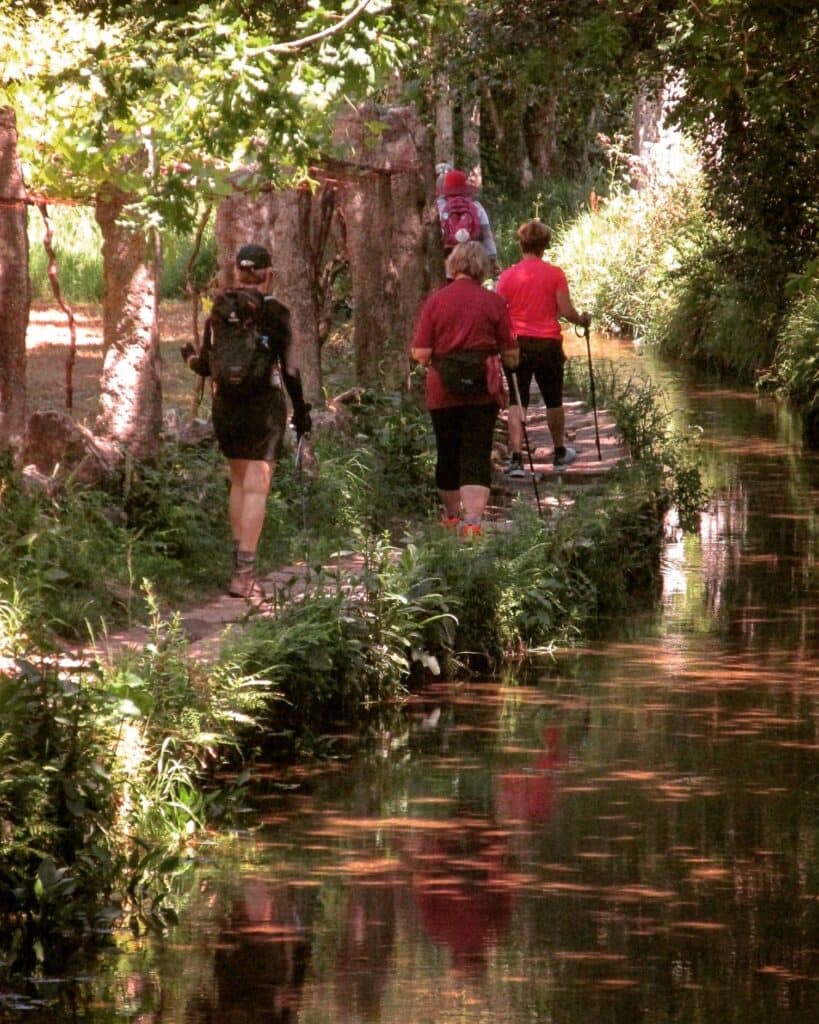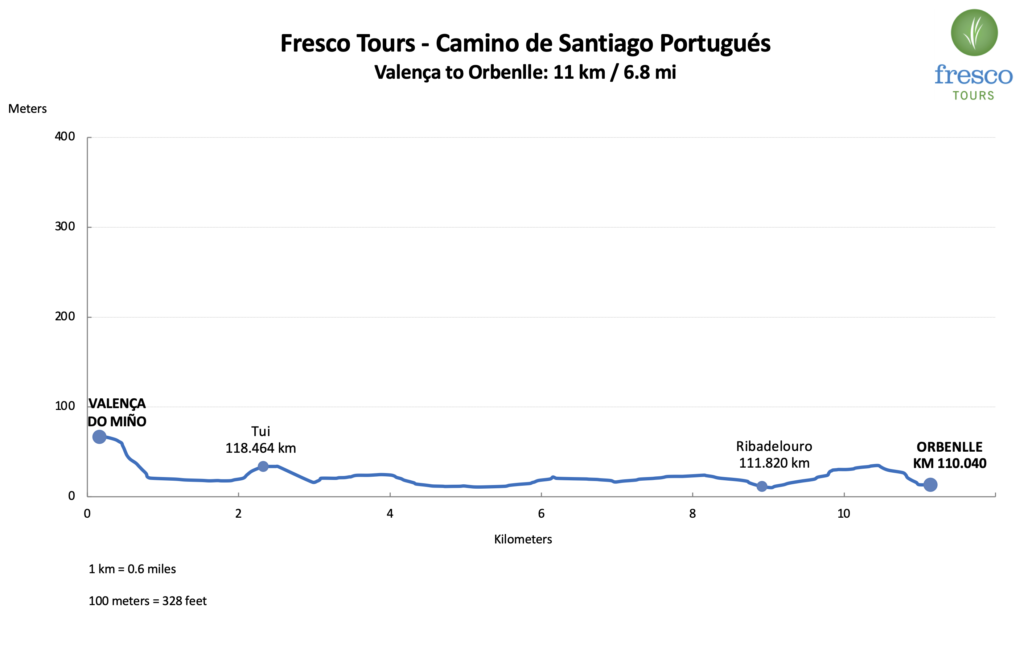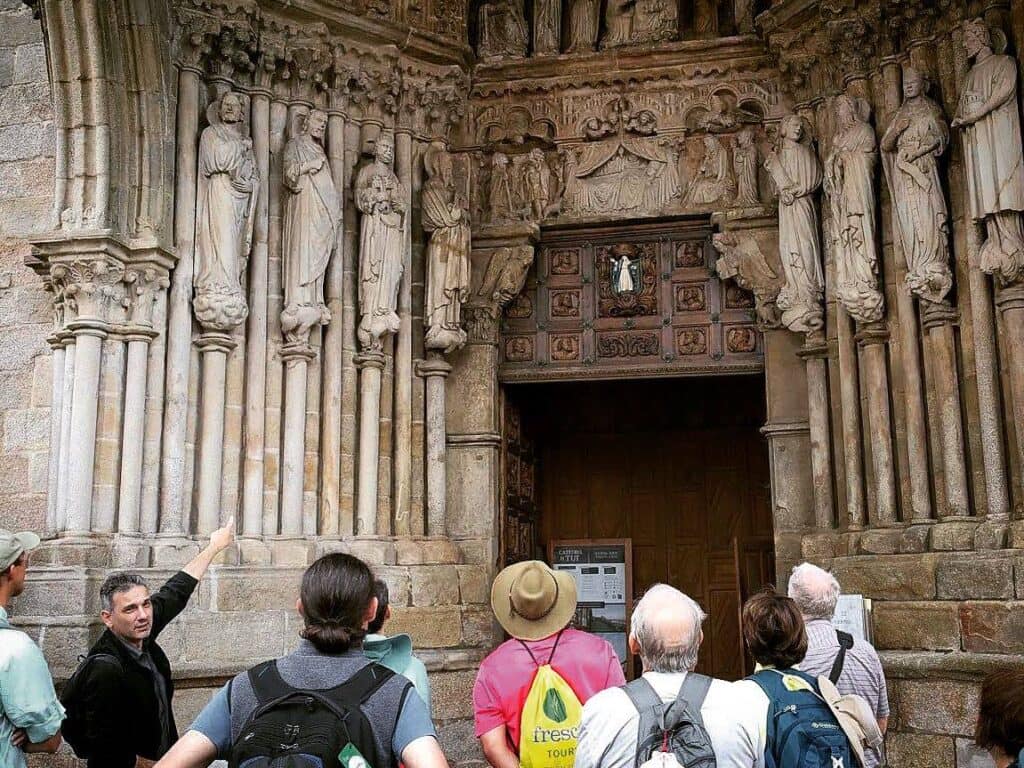Today our stage takes us from Valença do Minho to Orbenlle. After breakfast it is time to depart from the oldest city in Portugal and begin our second day of walking on the Camino. We will begin in the historic city of Valença do Minho, which has served as a crossing point of the Miño River for centuries. The Roman Road that connected Braga to Lugo passed through the town, and it is said that Emperor Augustus may have camped in the Castellum de Valença along one of his journeys.
The first walls of the famous Valença fortress were built in the 13th century and then expanded upon in the 17th century, and the structure is an architectural masterpiece. With a perimeter of 5km overlooking the river this fortress successfully defended attacks from both France and Spain along the northern Portuguese border. The views of the fortress from the bridge are breathtaking. After taking it in we will cross the bridge and the Portugal-Spain border to continue our journey into Tui, our destination for today. There is no longer an immigration or customs post on either side of this bridge as both countries have subscribed to the Schengen Agreement for free transit of persons within the European Union. But don’t forget to change your watches!

Valença do Minho
Like every other city named Valença or Valencia on the Iberian Peninsula, Valença do Minho was founded by the Romans and its name apparently comes from the Latin word ‘valentia’, which translates as vigour, strength or courage.
However, current Valença was called ‘Contrasta’ until the 13th century, when it was then renamed Valença and the old Roman nameof ‘Valentia’ recovered. The ‘do Minho’ part means ‘of the Minho’. The Minho is the river you will cross, and which becomes the Miño in Spain.

As we walk through the town of Tui we must visit the historic quarter to see the fortress-like Gothic Cathedral of Santa María, with its stunning west door. The cathedral was started in the late 11th century and it was finished 150 years later. Thus, and in line with many other cathedrals, the style progressively moved from Romanesque to Gothic. Its fortress-like appearance may have been because at the time of its construction Tui was already an important and wealthy city that was frequently attacked by Saracen pirates from the southern Muslim kingdoms in present day Portugal, Vikings from northern Europe or even the Christian Kingdom of Portugal.
As we depart Tui we will come upon a small forest where we will reach the picturesque San Telmo’s Bridge. The bridge is also called the Bridge of Fever by the locals, as this is where tradition believes that San Telmo fell ill on his way to Santiago with a high fever that would kill him shortly afterwards.

The first village we will encounter after a refreshing walk through the woods is Ribadelouro (riverbank of the Louro). The Camino leaves town by a set of five cruceiros in a little park. These mark the spot where the Romanesque Church of Saint Mary Magdalene used to stand. Local tradition says that Saint Mary Magdelene helped to protect from malaria, which was endemic at one time in the region (this may have been what killed San Telmo).
Our walk today ends in Orbenlle from where we will return to Tui for some local Spanish food and to get ready for another day along the Camino!



















